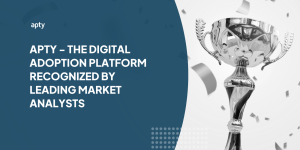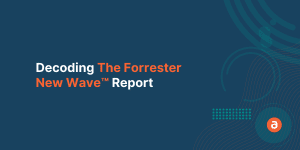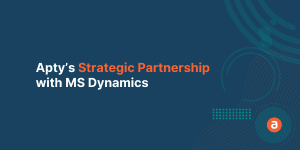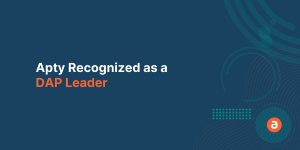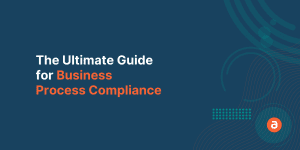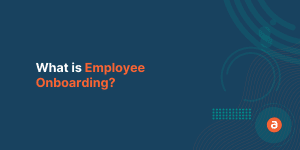Employee onboarding is a complex process and is way more difficult than hiring the candidate. When a new employee joins the company, they will want to fit into the organization’s culture.
They are usually nervous and want to know about their opportunities to grow in the company and the kind of opportunities that will be available to them for their growth.
As months go by, the employee starts to understand their role within the organization better and starts taking responsibility. They develop new skills and prepare themselves for the next stage within the organization.
As a year or two passes, the company starts to reap benefits out of its efforts, and the chances of the employees’ growth increase drastically. Employees learn to wear multiple hats which motivate other employees to do their best.
All this clearly shows that employee onboarding is not a one-time thing and rather a continuous process as the needs of employees evolve over time. A successful employee onboarding program not only boosts the performance and efficiency of the onboarded employee but also the employees around them.
So, it is imperative to create an employee onboarding process that addresses the challenges faced by employees at different phases and help them excel in their career.
What is the Employee Onboarding Process?
Employee onboarding is the process of introducing employees to an organization’s culture and ensuring success in their respective roles.
The approach towards employee onboarding is different in different organizations. The process starts the moment the employee accepts the job offer. In some companies, the onboarding process is active for a week while in other companies it spans over a year.
The ideal approach is to involve best practices and plan the employee onboarding process for over a year and segment the process into different phases.
In this blog post, we will explore the onboarding process in each phase and learn how to create a seamless experience that benefits both the employee and the organization.
How do you build an employee onboarding process?
Phase 1: Initial Onboarding
A. Get the paperwork out of the way
Paperwork is one of the most important parts of onboarding but is also a dull process. So, it is necessary to get the paperwork done as soon as possible.

You can digitize the whole process by using a digital document management tool, where the employees can fill out the documents by following the instructions and immediately share them with the HR team.
If there are too many forms, the organization can use a Digital Adoption Platform that can guide the new hire to fill the forms in the right format with correct details.
It not only saves time but also creates a better first impression by providing a seamless user experience right from the first day.
Relevant Read: Digital Employee Onboarding – The Only Guide You’ll Need
B. Ensure team involvement
Employee onboarding is not just the HR team’s job. It demands effort from different teams and stakeholders. For instance, if a project lead is hired, their job will involve coordination with multiple employees across silos.
So, their manager must introduce the new hire to the points of contact across all the departments.

The Managers must be educated about the onboarding process and must spearhead the onboarding process for their particular team. If they understand the importance of onboarding, they will manage it better and ensure that the new hire gets the best experience possible.
HR professionals and department managers are usually swamped with a lot of work that it gets difficult to look after every small detail concerning the onboarding process.
Establish an onboarding protocol and explain the duty of each team member. For example, one employee can welcome the new hire, another can introduce them to other team members, and a third one can prepare for a team lunch to make the new hire comfortable.
Related Read: 5 New employee onboarding challenges to overcome
C. Share important information
A new employee needs to understand the company’s culture and that can only happen if they interact with as many people as possible but doing so is difficult.

The HR Managers can arrange the following:
- Share the schedule for the first day.
- Introduce them to the team. Tell them who does what, and where the new employee will fit in between all that.
- Send a personalized message from the CEO. Small gestures like this can go a long way in making the new employee feel more positive and motivated.
- Invite the new hires to all the meetings and social gatherings that happen within the office premises.
- Add them to informal groups where people discuss their interests, it will help them interact with people, and understand the place better.
Phase 2: Initial Growth
A. Assign a Champion
The first few months in the organization can be difficult for the new hire. The employee may get overwhelmed with the amount of information they have to process.

Specifics like organizational structure, reporting method, project practices, management style, job role, team’s expectations, KPIs, and OKRs are difficult to learn and get adjusted to in a matter of few months.
Assign a colleague or teammate to address the new employees’ doubts. The role of the champion is to make the new hire comfortable within the organization and help them for at least 6 months to a year till they get familiar with the environment and their role.
B. Bring them up to speed
In the initial week, a new employee gets an idea about the company’s culture and values. After that, the company has to show those values. Allow the employees to talk to leaders from different functional groups.
Encourage them to strike a conversation with people from different departments to understand various business processes from their perspective. It will help the new employee understand the approach and direction of the company and the core values of the business to adapt accordingly.
C. Provide training
Explain to the employees what defines your organization and explain different types of processes that an employee has to follow to perform their day-to-day tasks.

You can go with the traditional form of training methods and couple it with modern methods like Digital Adoption Platforms which guide employees through complex processes on software. It provides employees the assistance that they need, whenever they need it due to its easy accessibility. This reduces the dependencies on the support team.
For instance, if a company has hired sales reps and they are not aware of the CRM platform that is used or its processes, a DAP can walk them through it, simplifying the learning process. They will be guided at each step and they can complete their tasks in no time.
This way, they can generate business outcomes in no time to boost the bottom line of the organization and the confidence of the new hire.
D. Set Clear OKRs and Goals
It is important to establish clear objectives and goals. You can start with OKRs (Objectives and Key Results) which help communicate how the objectives of a new member will align with the overall organizational goals.

Doing it in the early phase will help them gain a better understanding of their job and enable them to comprehend the kind of impact they can create with their work.
It also motivates the new employee to keep up with their teammates’ scores, creating a more competitive and involved workforce.
Relevant Read: Employee Onboarding Questions that Apty helps you Answer
E. Conduct team-building activities
Just introducing the new hire to team members will not be enough. The organization has to foster togetherness and collaboration. This can be done by hosting regular team-building activities.
These activities will help you break the silos and barriers to help employees collaborate across the organization without hesitation. It helps the management understand employees outside work and vice-versa.
Phase 3: Continuous Development and Improvement
A. Start with Regular Check-ins
Usually, organizations wait for a year to get constructive feedback from the new employee and their reporting manager. It is important to check in every month whether the employee is having a great experience.

Do it in coordination with the reporting manager to get a complete understanding. It will help you address the problems that new employees might be facing and you can work towards solving them.
B. Reinforce training
When employees are hired, they undergo a lot of training but over time they tend to forget what they have learned. It is important to give them regular refreshers or have a tool in place that can train them in real-time and provide quick assistance on any application.
Reinforcing training improves the capabilities of employees and their overall productivity. The HR Manager should coordinate with the Learning and Development team to arrange retraining sessions or deploy a tool like Digital Adoption Platforms.
C. Make them a mentor
Once they have been part of the organization for over a year, they begin to understand the onboarding process better than the older employees.

They can be a better guide to the new hire and can become a mentor or a buddy who guides them in the right direction. This will also help them realize their growth within the organization.
They can help the new hire understand the whole process that they will go through and how long it will take to fit in with the group. They can address the new team member’s doubts which will make them feel more secure and motivated.
Phase 4: Parting ways
Regardless of how great an onboarding you provide, sooner or later, an employee leaves the organization. Make their exit as smooth as possible.
Ensure a knowledge transfer session. Get their feedback to learn about their overall experience in the organization. The feedback can involve questions related to business, process, applications, colleagues, management, and organizational culture.
This will help you understand where you went wrong and what you can improve to optimize the onboarding process. Once everything is done, ask them to leave a review on any public platform like Glassdoor to help any possible talents understand the company’s culture and values.
Conclusion!
We now understand that employee onboarding is a continuous process and can help you improve the overall employee experience by removing the hurdles they face.
For onboarding success, the HR manager needs the right strategy, tool, and execution
Irrespective of the phase of employee onboarding, a tool like Apty can help steer through any application or process by guiding employees at the point of need and enhancing their overall work experience.

